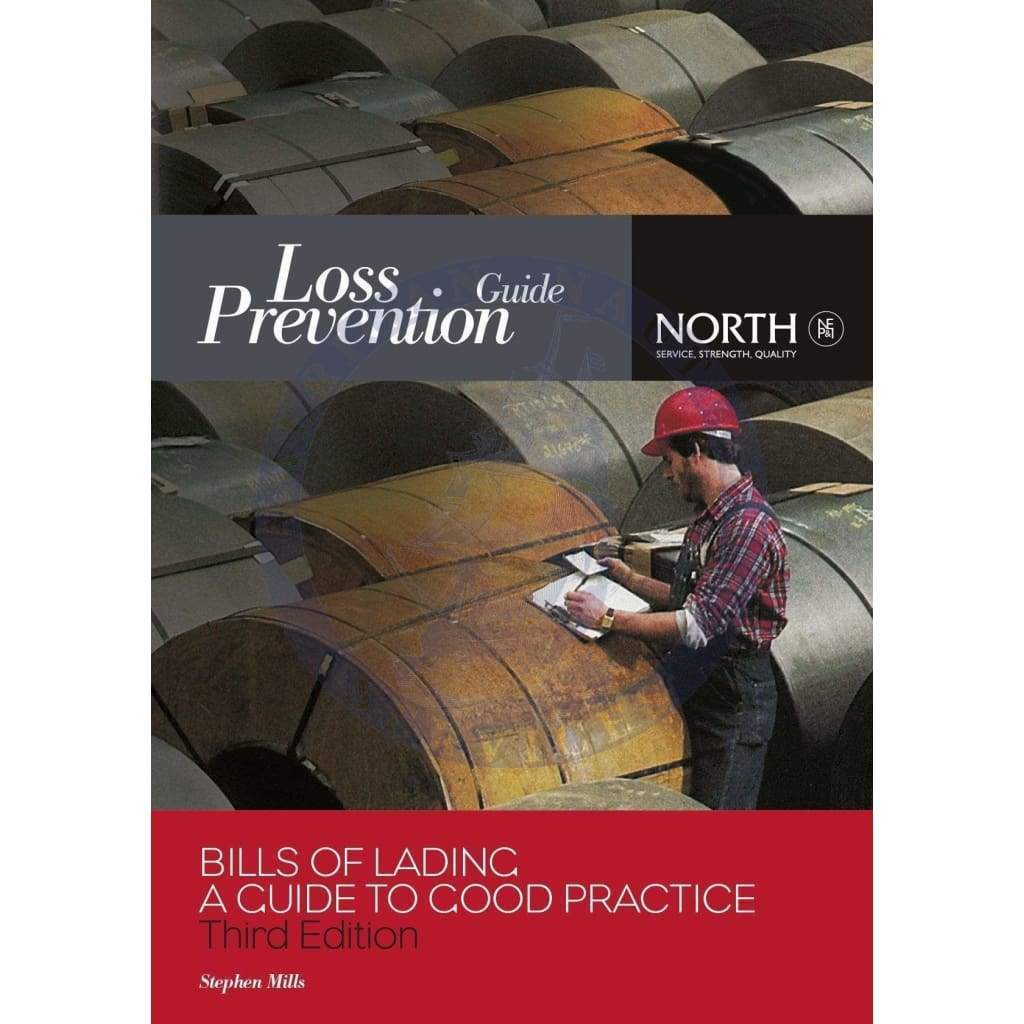- Home
-
Products
-
E-Navigation
-
Services
-
Resources & Information
- IMO Publication Carriage Requirements On Board Vessels
- U.S. Carriage Requirements for Nautical Charts & Publications on Board Ships
- List of Flag States Requiring Carriage Of Publications
- Rescue Net Information & Solutions
- Jane's Fighting Ships
- The Mariner's Blog
- Maritime Resource Directory
- Instructional Videos
- Downloads
- About
- Contact

Overview
This unique illustrated guide explains how to avoid disputes and problems arising from improper use of bills of lading, one of the most important yet least understood documents involved in the international carriage of goods by sea. It aims to assist ship’s officers, operators and managers in their understanding of the legal implications of bills of lading and the problems and practical issues surrounding their everyday use.
This guide works on various levels, with a practical guidance section supplemented by a theory section and footnotes to show the legal foundation of the advice given. Copies of the various international conventions are included together with an annotated and fully explained copy of the BIMCO Congenbill and the latest set of recommended standard letters. This third edition has been extended to cover electronic bills of lading and the legal section has been fully reviewed and updated.
Content
INTRODUCTION
Loss prevention and bills of lading
Notes on the third edition
How to use this guide
General notes
QUICK REFERENCE
How to use this section
The bill of lading – a quick guide to its role and its problems
PRACTICAL GUIDANCE
Signing bills of lading (paragraphs 1 – 21)
Delivering the cargo at discharge port (paragraphs 22 – 34)
A typical bill of lading – the BIMCO Congenbill (paragraphs 35 – 55)
THEORY
History and context (paragraphs 56 – 104)
Signing the bill of lading (paragraphs 105 – 199)
Sources of information for the bill of lading (paragraphs 200 – 214)
Movement of the bill of lading under the sale contract (paragraphs 215 – 225)
The voyage – deviation, delivery, loss and damage to cargo (paragraphs 226 – 245)
Delivery of the cargo (paragraphs 246 – 265)
Other matters (paragraphs 266 – 279)
Other documents and variations (paragraphs 280 – 294)
Security issues (paragraphs 295 – 296)
Sanctions (paragraphs 297 – 298)
ELECTRONIC BILLS OF LADING
Background (paragraphs 299 – 308)
P&I cover (paragraphs 309 – 319)
The master’s role (paragraphs 320 – 323)
Charterparty requirements (paragraph 324)
LEGAL NOTES
APPENDICES
I Glossary
II Standard letter of authority to issue bills of lading
III P&I club circulars on standard letters of indemnity
IV Standard letters of indemnity
V Hague Rules
VI Hague-Visby Rules
VII Hamburg Rules
VIII List of countries applying the conventions
IX UK Carriage of Goods by Sea Act 1992
X P&I club circulars on electronic (paperless) trading systems
XI International Group of P&I Clubs frequently asked questions of August 2013 on paperless trading
BIBLIOGRAPHY
INDEX
Introduction
In 1996 the North of England P&I Association issued a simple questionnaire to readers of its loss prevention newsletter Signals. It asked for their experiences with regard to the issue of bills of lading and subsequent delivery of cargo against those bills of lading. The majority of answers were received from shipowners’ offices or from masters, with agents, operators, financiers and others also responding.
A number of specific problems set a recurring theme
-
pressure on the master to issue clean bills of lading
-
disagreement between ship’s and shore figures
-
agents signing bills of lading without reference to the mate’s receipts or in excess of their authority from the master
-
requests to deliver the cargo without production of the original bill of lading.
A general point also emerged which can be summarised by one member’s comment
‘I have noticed a distinct casualness by shippers, receivers and their agents at load/discharge ports about the importance to the master of bills of lading. Conclusion: they are ignorant of its legal purposes.’
Strong words, but possibly true. Although the bill of lading is a key document in a transaction where the cargo and freight together may be worth several millions of dollars, masters who are diligent or cautious in their handling of that document may often be seen by others as obstructive or awkward. If masters are to stand their ground and justify their stance, then they may need to know not only what they have to do, but why they are doing it.
The aim of this guide is to assist ship’s officers, operators and managers in the understanding of bills of lading and the problems and practical issues surrounding their everyday use. The hope is that they will then be able to deal with these situations and the many others that arise in connection with what is a vital and unique document.
Details
Title: Bills of Lading: A Guide to Good Practice (Third Edition)
Edition: Third
Number of Pages: 162
Product Code: WS1703K
ISBN: ISBN 13: 978-0-9574936-0-5 (9780957493605), ISBN 10: 0-9574936-0-6 (0957493606)
Published Date: August 2019
Weight: 0.60 kg
Author: The North of England P&I Association Ltd








